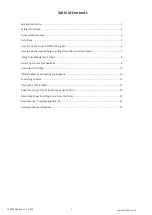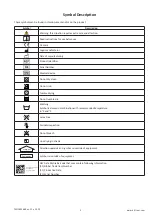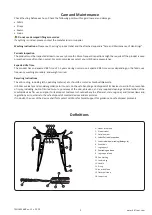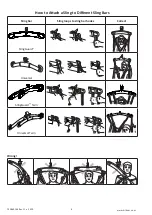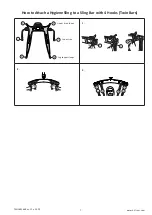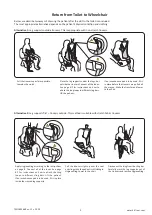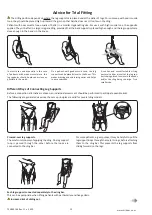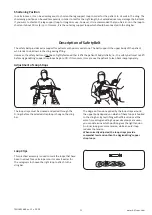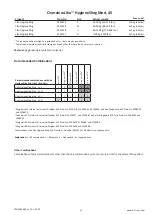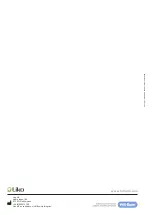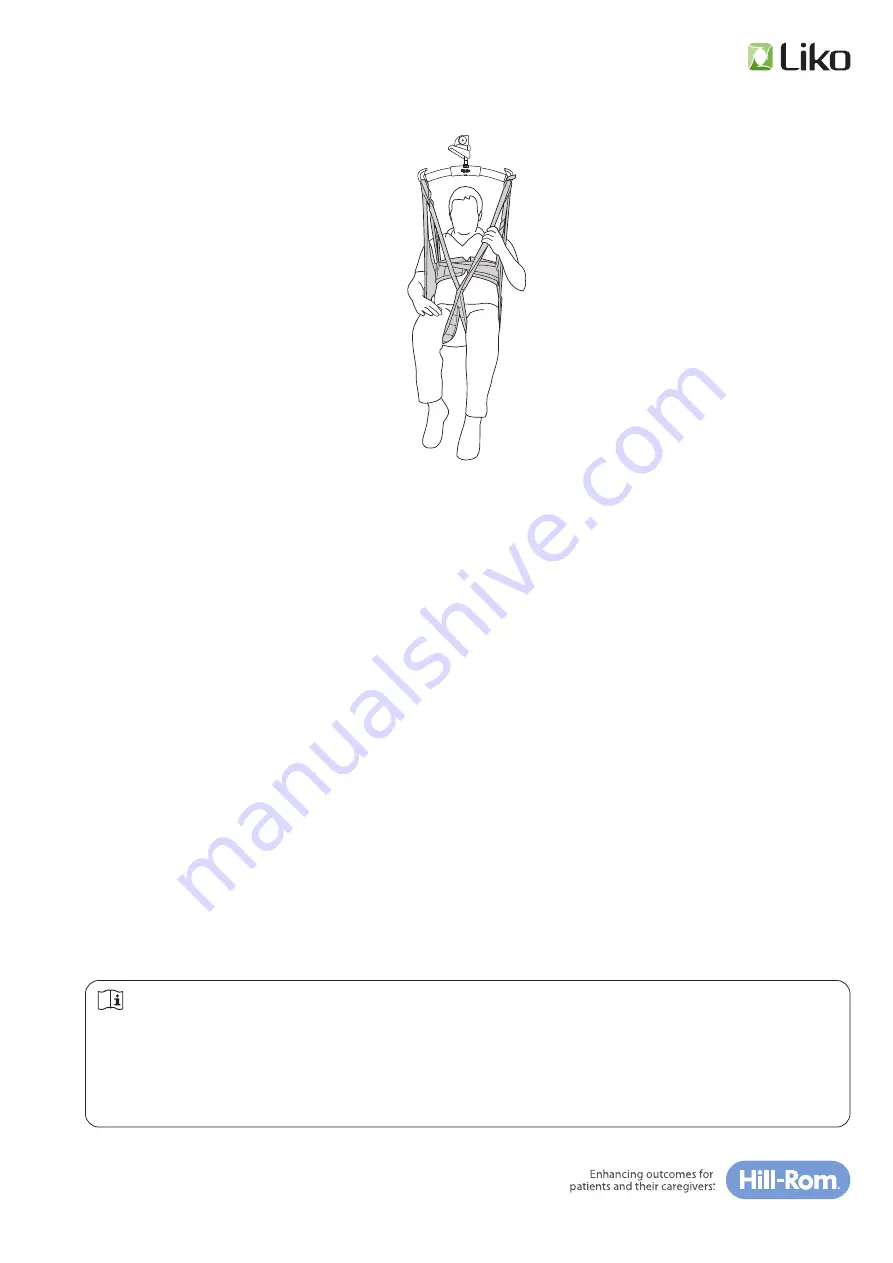
Product Description
This instruction for use is valid for Liko HygieneSling with
SafetyBelt but in the following text we will only use the name
Liko HygieneSling.
Liko HygieneSling has been designed to facilitate dressing and
undressing in connection with lifts to and from the lavatory.
Caregivers often experience such lifting operations as heavy
and difficult. With HygieneSling, dressing and undressing can
be done during the actual lifting operation, thanks to the large
opening around the seat of the sling.
Experience has shown that HygieneSling also works for
patients wearing long trousers or skirts and tights (pantyhose).
Liko HygieneSling is easy to apply, even if space around the
wheelchair is very limited.
Liko HygieneSling is often the most appropriate alternative
for patients with a certain degree of stiffness.
HygieneSling is
made of green polyester and the leg supports
are reinforced and padded with a curduroy fabric.
The patient should have relatively good torso and head
stability to be able to sit comfortably and securely in
HygieneSling. For patients with poor muscle tone, it is
recommended a smaller size of HygieneSling or HygieneVest,
Mod. 55.
For patients who tend to sink down in the sling, the safety belt
distributes pressure and provides extra support during the lift.
T
he HygieneSling can be used along with all of Liko’s overhead
and mobile lifts. You can choose between the overhead lifts
LikoGuard™, Likorall™, and Multirall™ or the mobile lifts
Golvo™, Viking™, Uno™, and Liko™ M220/M230.
In this document, the person being lifted is referred to as the patient and the person helping them is referred to as the
caregiver.
7EN160166 Rev. 11
ENGLISH 2020
Liko™ HygieneSling with SafetyBelt Mod. 45
Instructions for Use
Mod. 45
IMPORTANT!
Lifting and transferring a patient always involves a certain level of risk. Read the instructions for use for both the patient
lift and lifting accessories before use. It is important to completely understand the contents of the instructions for use.
The equipment should only be used by trained personnel. Ensure that the lifting accessories are suitable for the lift used.
Exercise care and caution during use. As a caregiver, you are always responsible for the patient’s safety. You must be aware
of the patient’s ability to make it through the lifting situation. If something is unclear, contact the manufacturer or supplier.


